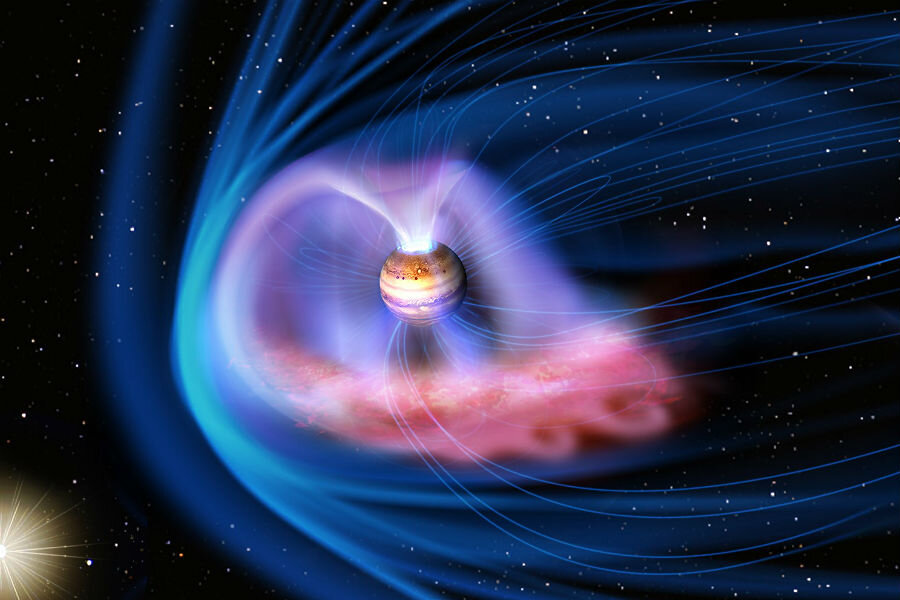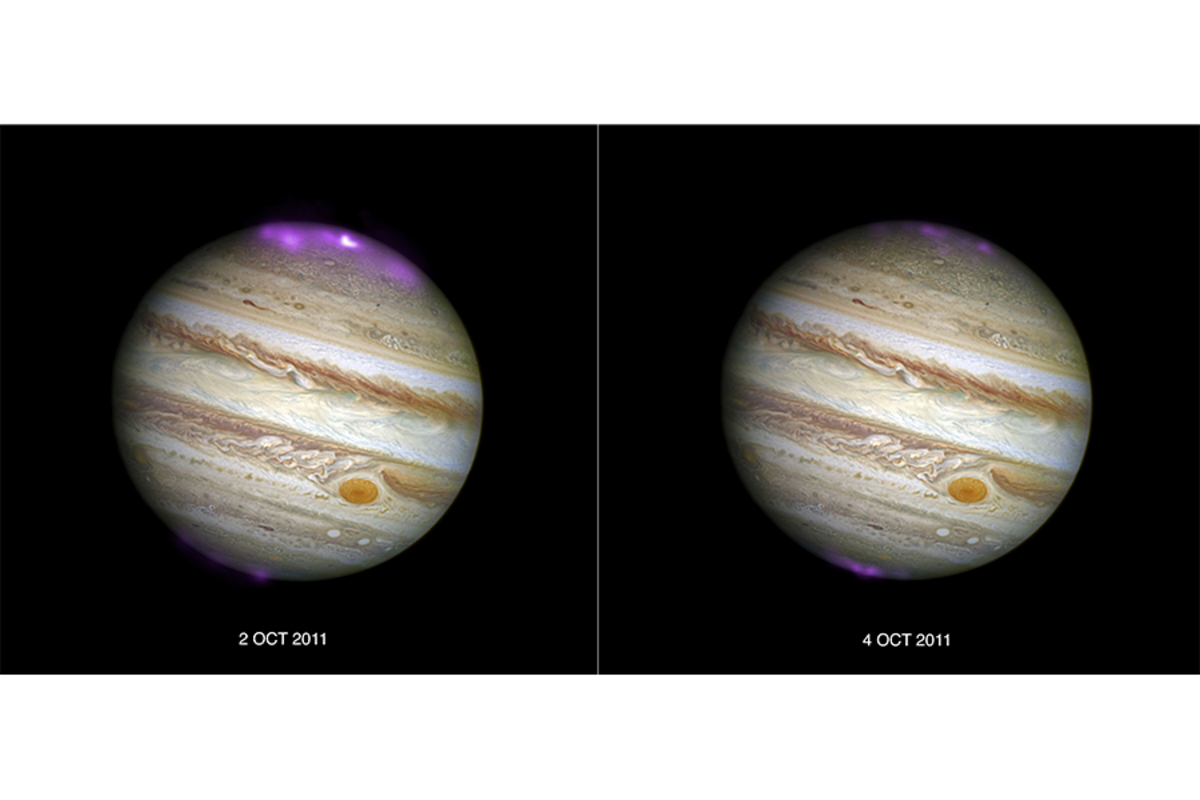Solar storm on Jupiter makes brilliant X-ray auroras shine
Loading...
Scientists observed Jupiter’s X-ray aurora – its “northern lights” – for the first time during the onslaught of a solar storm, with parts flaring to eight times as bright as normal.
The observations helped scientists understand how Earth interacts with these enormous solar storms and solar winds, while also shedding light on fundamental planetary processes.
The new study, published Tuesday in the Journal of Geophysical Research – Space Physics, also provides a prelude to NASA’s Juno mission, set to begin its orbit of Jupiter on July 4th.
“The sun is constantly pouring out charged particles – the solar wind,” explains lead author Will Dunn, a doctoral student in planetary science at the University College London, in a Skype interview with The Christian Science Monitor. “A solar storm is when you have a massive ejection of these particles, which erupts into space.”
By watching the storm's progress from the sun, past Earth, and on out across the solar system, the researchers successfully predicted when it would reach Jupiter.
They scheduled an observation window using NASA’s Chandra X-ray telescope.
Just when they predicted the storm would hit, the scientists observed two things: brilliant flares, brighter than ever before seen on Jupiter, and the acceleration of an X-ray "lighthouse" that ordinarily pulses every 45 minutes almost doubling its rate, emitting a burst of X-ray energy at 26-minute intervals.
“It’s like a planetary lighthouse,” says Mr. Dunn, “pulsing quicker when the storm hits.”
Why? The researchers still aren't sure, but they are excited to find out. With Juno's arrival, they will be able to compare the spacecraft's readings to observations from Earth-based telescopes and investigate these phenomena in greater depth.
“Juno will settle into a polar orbit,” says co-author Marissa Vogt of Boston University, in a telephone interview with the Monitor, “whereas Galileo [the only previous mission to orbit Jupiter] stayed on the equatorial plane. Juno’s going to get really good views of the aurora.”
In general, explains Dunn, “if a planet has no magnetosphere, the solar winds will sweep away the atmosphere – unless the planet has a way of constantly replenishing its atmosphere.”
A magnetosphere, the global magnetic field surrounding any magnetized planet, helps shield its planet from solar storms and their life-threatening bursts of solar radiation, explains Dr. Vogt. Without this protection, a planet is unlikely to support life.
For example, Mars once had a magnetosphere, but now has, at best, a mini one, “so the solar wind for the last few billion years has swept away the atmosphere,” explains Dunn. The almost undetectable magnetosphere and wispy threads of an atmosphere “can't protect the surface from radiation that life would find harmful.”
Space weather – the way in which a planet’s atmosphere, magnetosphere, and solar radiation all interact – can create dazzling aurora displays even while threatening satellite communication and other orbiting technology.
Understanding Jupiter's space weather helps scientists understand Earth's, plus it is fascinating in its own right, says Dunn.
“If you could stand on Jupiter and observe its aurora, they would appear brighter than the sun itself, even during the day,” he says. “Moreover, its northern lights are massive, bigger than the Earth if you flattened it out and laid it on Jupiter.”







